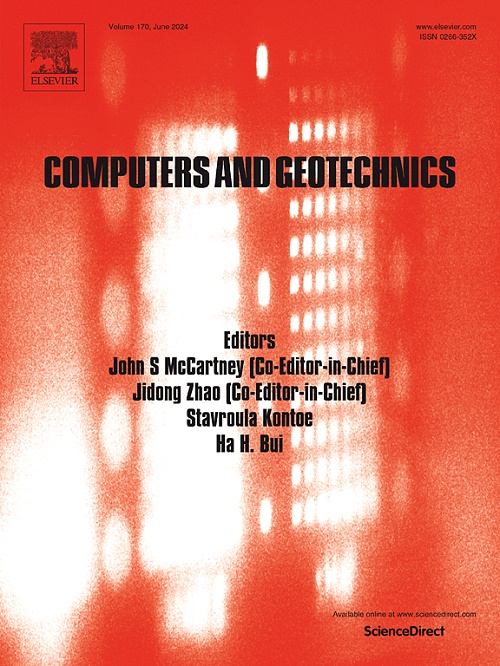Development of a p-multiplier for laterally loaded single batter piles in sand based on simple upper bound analysis
IF 5.3
1区 工程技术
Q1 COMPUTER SCIENCE, INTERDISCIPLINARY APPLICATIONS
引用次数: 0
Abstract
Batter piles are prevalently found in foundation pits, bridges, transmission towers, and wharf structures, serving to withstand lateral loads. Nevertheless, the investigation and analysis methods related to batter piles remain scarce. Considering the limitations of existing p-multipliers for batter piles, this research develops an enhanced p-multiplier rooted in the soil failure mechanisms and upper bound analysis. The proposed p-multiplier is initially derived from simplified 2D soil failure modes, and then further enhanced based on extended 3D soil failure modes, which effectively reflect the 3D effects of soil-pile interaction. Comparative analyses demonstrate that the proposed p-multiplier well captures the influence of pile inclination and soil internal friction angle on soil resistance, showing superiority over previous studies. Moreover, incorporating the proposed p-multiplier with curves allows rapid and fair assessment on the lateral behavior of single batter piles in sand, and the reliability is validated by two reported cases of batter piles. However, due to the ignorance of shaft friction and lateral component of axial displacement of batter pile, the proposed method is recommended for small batter angles. In the range of , the proposed method is adequate as verified by the experimental results.
基于简单上限分析的砂土单桩横向荷载p乘法器的研制
斜桩普遍存在于基坑、桥梁、输电塔和码头结构中,用于承受横向荷载。然而,有关桩体的调查和分析方法却很少。考虑到现有p-乘数法在桩身土体破坏机理和上限分析上的局限性,提出了一种改进的p-乘数法。本文提出的p乘数首先从简化的二维土破坏模式出发,然后在扩展的三维土破坏模式的基础上进一步增强,有效地反映了土-桩相互作用的三维效应。对比分析表明,本文提出的p乘数较好地反映了桩侧倾角和土内摩擦角对土阻力的影响,具有较好的优越性。此外,将所提出的p-乘数与p-y曲线相结合,可以快速、公平地评估砂土中单桩的横向行为,并通过两个桩例的报道验证了该方法的可靠性。然而,由于忽略了桩身摩擦和桩身轴向位移的侧向分量,该方法仅适用于较小的桩身角。实验结果表明,在-15°-15°范围内,该方法是合适的。
本文章由计算机程序翻译,如有差异,请以英文原文为准。
求助全文
约1分钟内获得全文
求助全文
来源期刊

Computers and Geotechnics
地学-地球科学综合
CiteScore
9.10
自引率
15.10%
发文量
438
审稿时长
45 days
期刊介绍:
The use of computers is firmly established in geotechnical engineering and continues to grow rapidly in both engineering practice and academe. The development of advanced numerical techniques and constitutive modeling, in conjunction with rapid developments in computer hardware, enables problems to be tackled that were unthinkable even a few years ago. Computers and Geotechnics provides an up-to-date reference for engineers and researchers engaged in computer aided analysis and research in geotechnical engineering. The journal is intended for an expeditious dissemination of advanced computer applications across a broad range of geotechnical topics. Contributions on advances in numerical algorithms, computer implementation of new constitutive models and probabilistic methods are especially encouraged.
 求助内容:
求助内容: 应助结果提醒方式:
应助结果提醒方式:


